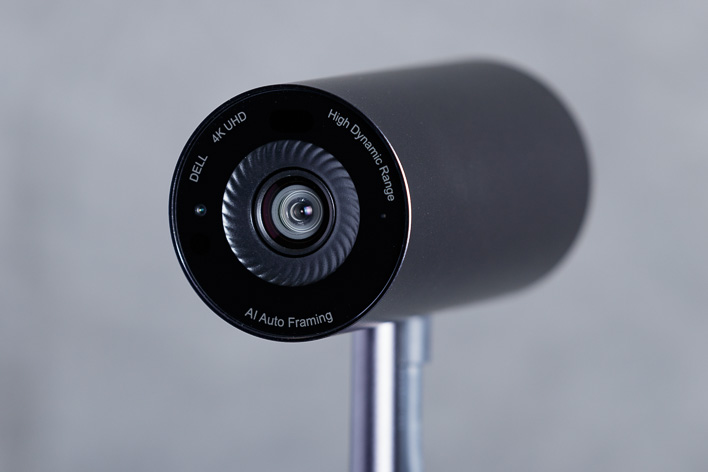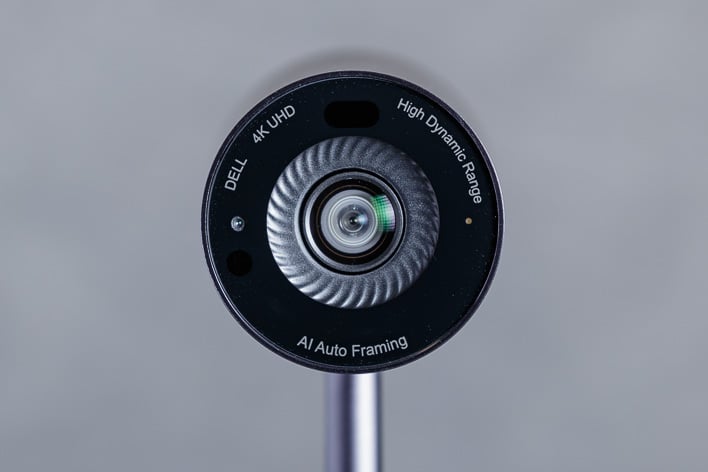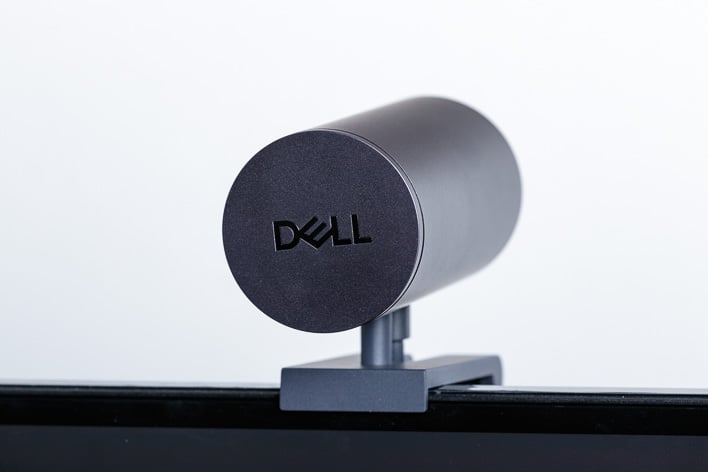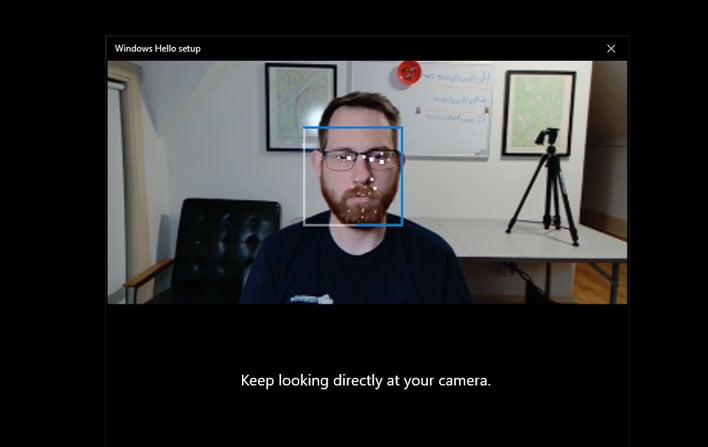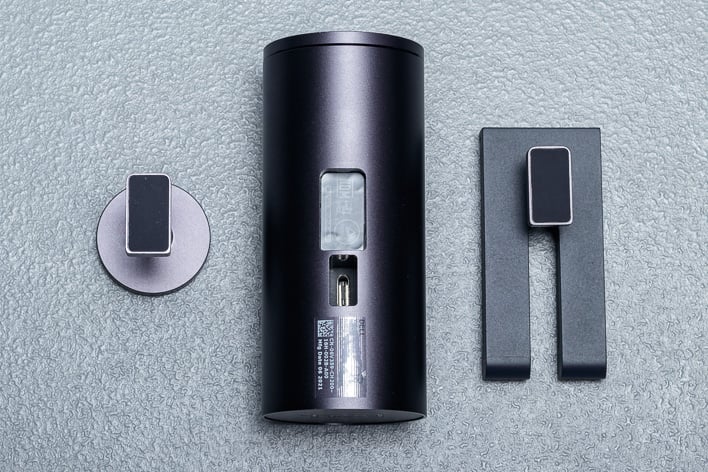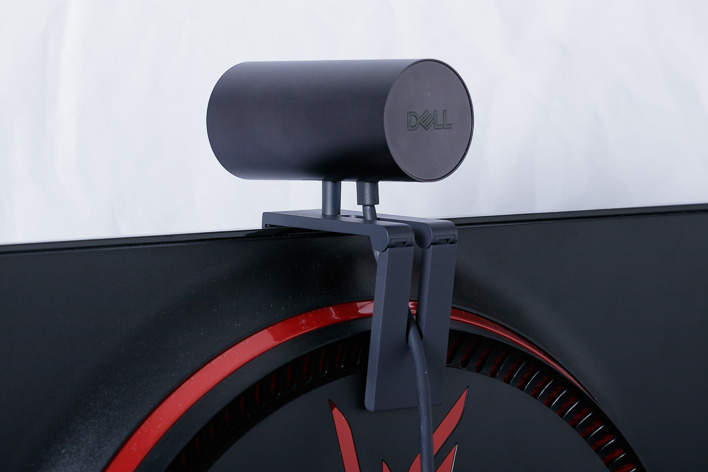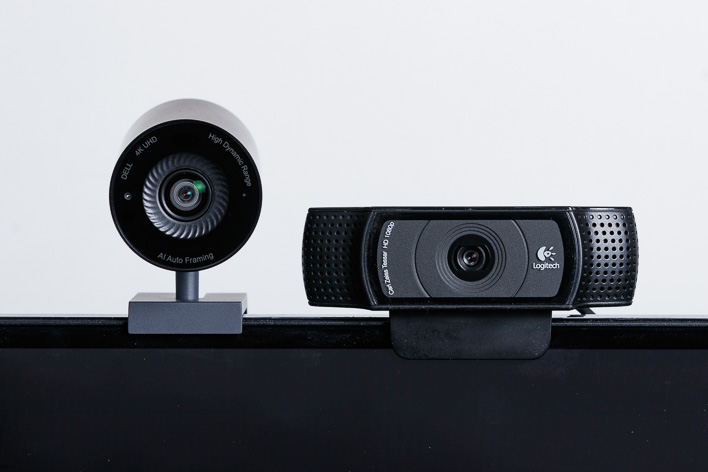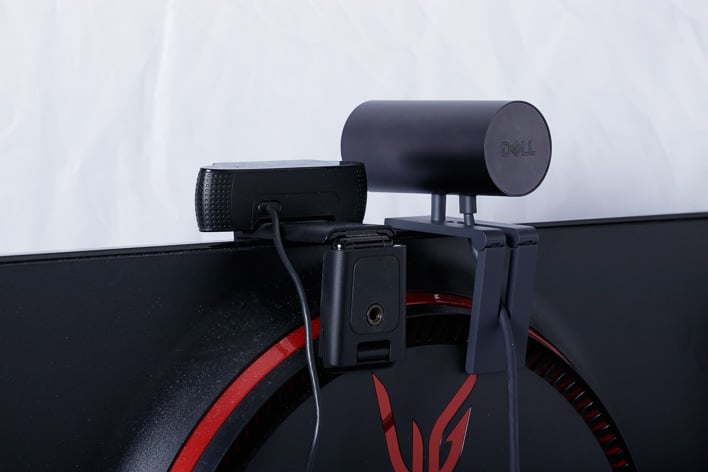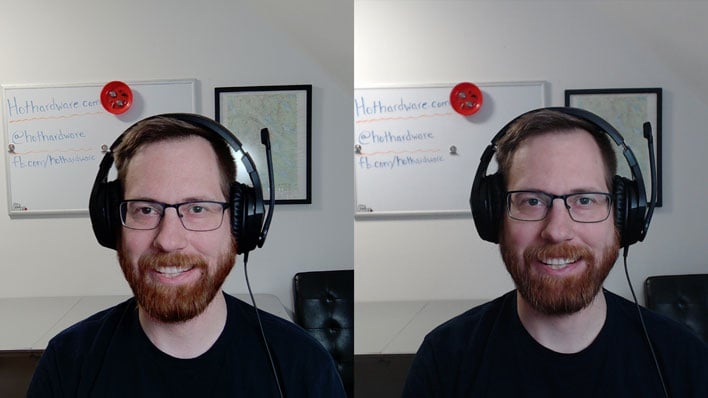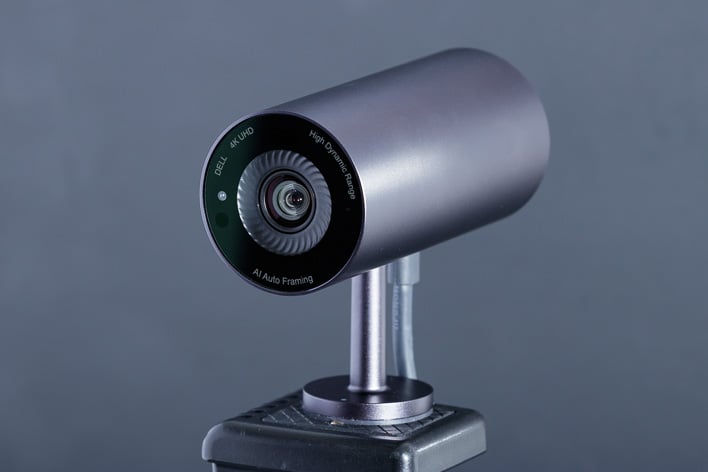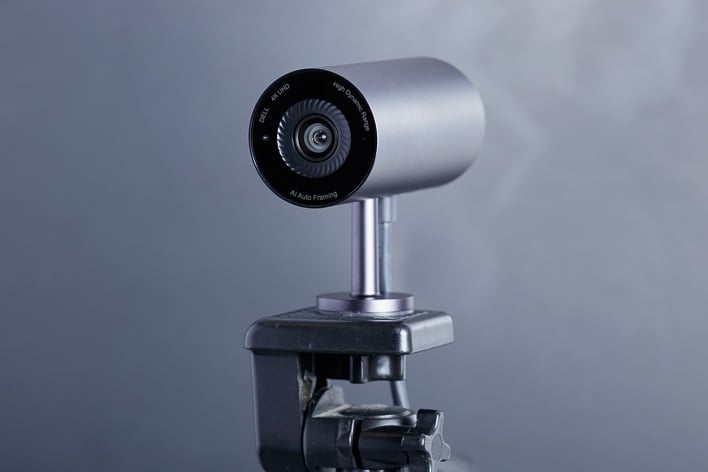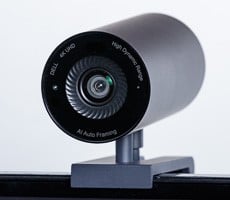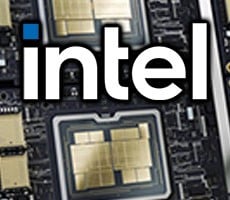Dell UltraSharp 4K Webcam Review: Up Your WFH Video Quality
Can Dell's New 4K Capable UltraSharp Webcam Help You Up Your Work From Home Game?
Dell UltraSharp Webcam Design, Features And Build Quality
The Dell UltraSharp Webcam has a very premium feel to its build. It is essentially a metal cylinder measuring 3.54” (90mm) long with a 1.65” (42mm) diameter. This is a little larger than most webcams on the market, but still significantly smaller than any DSLR or mirrorless camera setup could be.
However, this webcam's defining feature is its image sensor. The Dell UltraSharp Webcam houses a "large" 8.3MP Sony STARVIS sensor. The STARVIS family of CMOS sensors is primarily intended for industrial and surveillance applications where low-light performance is critical. These sensors feature an excellent signal-to-noise ratio which can result in less grainy images under suboptimal conditions.
There is some irony here, in that Dell is calling this a "large" Sony STARVIS sensor, however. At 1/2.8-inches (a hair over 1/3rd-inch), this is the smallest size STARVIS sensors are produced in. At least for webcams, though, this descriptor is mostly true. Logitech's competing BRIO 4K camera uses a 1/4-inch sensor, which means the Dell UltraSharp Webcam has about 33% more area. Is this size difference in and of itself enough to improve image quality? Not likely, as with all other factors held equal this would only make about a 1/3 stop improvement in sensitivity. At the end of the day, this is still smaller than many cellphone camera sensors. It is the STARVIS sensor's other qualities including Backside Illumination (BSI) which will help it stand out.
The camera includes a magnetic lens cap for protection and privacy when the device is not in use. The magnet’s attraction is strong enough to survive a trip in a bag without being difficult to purposefully remove. While in place, the camera does not power off though, which may be a nice addition in the future if Dell could work it out in software. The camera array does include a proximity sensor, so perhaps a future firmware update could make this happen.
The camera’s main 4K sensor and proximity sensor are joined by an IR camera. This makes the Dell UltraSharp Webcam compatible with and well-suited for Windows Hello sign-in option. In our testing, the Windows Hello setup process was very quick and easy. Windows had no issue distinguishing between our faces using this camera. We will point out that Windows Hello apparently does not care if eyes are closed and the machine it's plugged into will still unlock.
Regardless, one feature missing from the Dell UltraSharp Webcam is a microphone. Dell likely assumes anyone in the market for a $200 webcam is also interested in a better audio solution than an integrated array may offer. Still, laptop users in particular may have appreciated having a microphone embedded as an option. Laptops can often have laughably poor integrated microphones, and a headset is not always the most convenient solution.
The two included mounts also feature solid metal construction. The first option is hinged so it can perch atop a monitor or laptop display with ease. The front lip is just large enough to hook in place without intruding on thin-bezel monitors, like our LG 27GN850-B, and the interior of the hinge is rubberized to avoid scuffing the display. The other mount is designed to fit any ¼”-20 threaded tripod and is similarly rubberized on the bottom. The top of each mount is magnetized and recesses securely within the cylindrical camera body.
When the Dell UltraSharp Webcam is first connected to a computer it will prompt to auto-install the Dell Peripheral Manager (DPM) application. DPM enables the user to tweak camera settings, enable advanced features like AI Framing, and perform basic local recordings. We will explore most of these features as we step through our image quality assessment.
Dell UltraSharp Webcam Image Quality
Most screenshots in this review are captured using Open Broadcaster Studio (OBS) with a 3840x2160 60fps canvas and the software’s Screenshot Output option. Camera feeds at lower resolutions are scaled up to match the canvas resolution without any scale filtering (e.g. Bicubic). This allows us to show two cameras side-by-side and capture comparisons simultaneously. The screenshots showing the DPM interface are captured using the built-in window snipping tool.The Dell UltraSharp Webcam’s native field-of-view (FOV) is 90-degrees on the diagonal which equates to about a 22mm focal length equivalent on a full-frame camera. This is a very wide angle which can allow the camera to be used at close distances. Using DPM, users can opt to select 78-degree and 65-degree FOVs instead, or otherwise adjust a stepless digital zoom slider. Screenshots in this review are captured using OBS with a 3840x2160 60fps canvas and the software’s Screenshot Output option. Camera feeds at lower resolutions are scaled up to match the canvas resolution without any scale filtering (e.g. Bicubic).
The camera's 8.3MP sensor amounts to a 3840x2160 UHD resolution. As a result, changing the FOV options from the default will necessarily reduce the resolution. This typically is not a great concern with most web conferencing software but is a consideration to be aware of. The image looks relatively sharp even at the tightest 65-degree FOV setting, though near-pixel level losses can be observed.
Before we move forward, we found the saturation and contrast of the Dell UltraSharp Webcam are boosted unnaturally high by default. Here is a comparison of default color rendition compared with our “to taste” adjustments…
While the default image is generally oversaturated, the red channel is particularly boosted which gives me a sunburnt appearance. Thankfully, the correction is easy to make in DPM. These color and image settings, along with Camera Control, apply to all applications the camera is used with. The resolution and framerate options are specific to DPM’s recording function and will be overridden by your application of choice.
The HDR toggle is a function we would personally avoid. Even with our saturation and contrast reduction applied, the colors with HDR enabled tend to be unpleasant. This setting appears to only be boosting the darker parts of the frame without also toning down their saturation. This also results in a noticeably noisier image. The camera handles high contrast environments better by simply turning down the contrast slider.
So far, all sample images have been captured with the Dell UltraSharp Webcam set to 4K and 30fps. While 30fps is the maximum at 4K, this webcam can reach 60fps by dropping the resolution to 1080p.
Finally, we wanted to compare the Dell UltraSharp Webcam to one of our favorite options, the Logitech C920. The C920 typically retails for about $79 and delivers respectable 1080p video. Logitech also makes a comparable 4K webcam, the Logitech BRIO, but we did not have a unit on hand to perform a direct comparison. Nevertheless, we can get a sense of whether or not the Dell UltraSharp Webcam is worth its two and a half times higher price point, versus the popular lower-end C920.
These comparisons were performed with the Dell UltraSharp Webcam set to 78-degree FOV to most closely match the Logitech C920’s angle of view.
First up, we have the two cameras in balanced lighting. The Dell UltraSharp Webcam is moderately sharper than the Logitech C920. This is particularly evident in the skin texture, even when the Dell’s 4K image is scaled down to 1080p.
Up next, we turned off the room light and only kept our diffused face light on. Again the Dell UltraSharp Webcam delivers stronger details with very little loss of quality. The Logitech C920’s image has gotten noisier and pushes for a brighter exposure which blows out some skin tones.
We then reversed our lighting setup with the room light turned on and the face light shut off. This is a common lighting scenario we see in the real-world. Interestingly, the background brightness is similar between cameras, but the Dell does a much better job of bringing up brightness on the face. The Logitech C920 loses the face to shadows and would require manual adjustment to bring exposure up to an acceptable level.
Finally, we shut off all the lighting in the room. The only light is coming from the monitor and some sunlight peeking through the window blind. Despite the darkness, the Dell UltraSharp Webcam still produces a usable image that is only just starting to show grain. The UltraSharp Webcam's Sony STARVIS sensor really shines here.
Dell UltraSharp Webcam Final Thoughts & Review Conclusion
The Dell UltraSharp Webcam succeeds at delivering impressive image quality in a small form-factor. We are particularly impressed by its ability to manage exposure and curb grain across a wide range of lighting environments. Folks looking for a set it and forget it experience will be well satisfied here.
Nevertheless, we have a few observations about the Dell UltraSharp Webcam that more discerning shoppers may want to consider. The first is largely superficial, but relates to the webcams touted "large" sensor size. Beyond low-light capability, a large sensor size typically indicates that the camera can create a shallower depth of field which blurs the background. This is attractive for videoconferencing because it can minimize the appearance of distracting background elements in the frame. In our testing, we found the background remains very sharp. In fact, the Logitech C920 with a smaller 1/4" sensor provided more background separation, albeit slightly. If a shallow depth of field for a bokeh blur effect is a priority and you do not want to rely on software filters, a conventional camera plugged into a capture card or via USB, with a wide aperture lens is the way to go.
Beyond that, we just encountered some quibbles with the webcam's functionality. In particular, we noticed the Dell UltraSharp Webcam would hunt for focus pretty regularly. The Logitech C920 was much better about locking in focus across all lighting environments, and when it did lose focus it was less dramatic. The Dell UltraSharp Webcam tends to rack through its focus range before recovering which can be jarring at times. Again, this is something that could be remedied in a future software update, however.
We were also unable to get the Dell UltraSharp Webcam working with OBS at 1080p/60fps. While the settings appeared to apply, motion in the frame did not appear smooth as it should for a 60fps feed. We investigated by recording snippets and then played them back frame by frame. When we did this, the webcam's image would only update every 2-3 actual frames. Video captured within DPM played 60fps smoothly and OBS captures other sources (e.g. overlaid scrolling text) at 60fps smoothly, so we are not certain which aspect is to blame.
Our biggest gripe is with the AI Framing feature which we have saved discussion on until now. We were hoping for a solution that could track movement in real-time, such as a presenter moving around a stage, but in practice it only updates periodically. Furthermore, it only seems to "punch in" to track about as far as the 78-degree FOV, regardless of the subject's distance from the camera. The tracking can also lose the subject momentarily, in which case the camera quickly reverts to 90-degree FOV and then pseudo-zoom's back in. We recommend leaving this feature off in most cases and frame up the old-fashioned way.
We expect that these latter issues also can be resolved through firmware updates, but that does not mean they will be. We can only assess the camera as it performs currently, so we recommend keeping an eye out for updates to address these aspects if they are concerns you share. For future revisions, we would love to see some amount of optical zoom incorporated into the camera. Even a 2x optical zoom would result in much better framing flexibility, without throwing away resolution and sharpness.
Regardless, we really like what we have seen in using the Dell UltraSharp Webcam. It does feel like a genuine step forward over the Full HD webcams of yore. Sure, it falls far short of matching a conventional camera's quality and features, but it costs significantly less as well. While many will be served just fine with options like the venerable Logitech C920, the extra image refinement the Dell UltraSharp Webcam can deliver helps justify its premium pricing.

|
|

